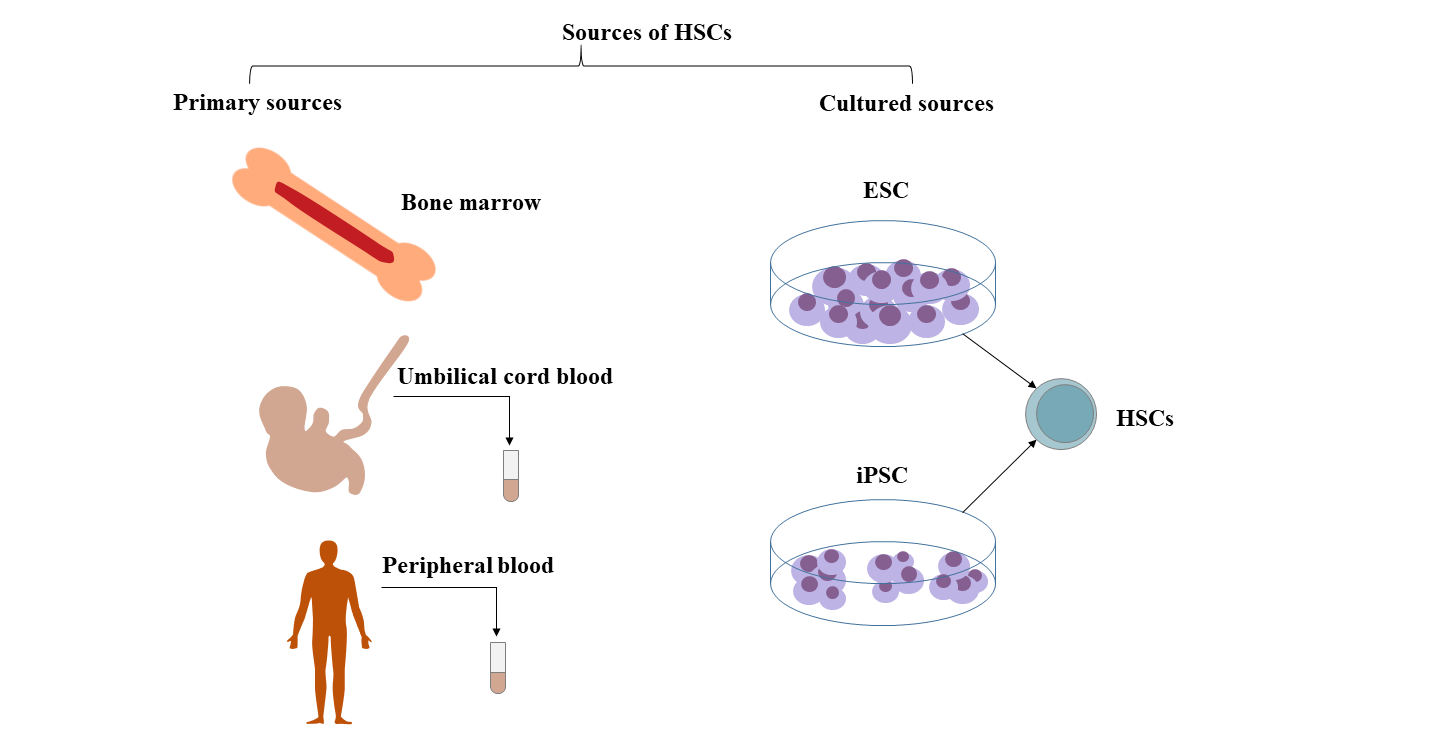What Are Hematopoiesis
It is continually in progress in all healthy humans and most animals. Hematopoiesis pronounced heem-at-oh-po-EE-sus is the process by which all of your blood cells are formed develop and mature into their final adult types.
Difference Between Hematopoiesis And Erythropoiesis Compare The Difference Between Similar Terms
The process continues through adulthood to keep.

What are hematopoiesis. Hemopoiesis or hematopoiesis is the process by which new blood cells are formed. Which bones does hematopoiesis occur. Hematopoiesis is the process by which immature precursor cells develop into mature blood cells.
These transport oxygen and hemoglobin throughout the body. Hematopoiesis is the production of all of the cellular components of blood and blood plasma. Bone marrow the tissue inside bones is one of the most active organs in the body and is the site where red blood cells the majority of white blood cells and platelets are produced.
Poiēsis a making Medical Dictionary for the Dental Professions Farlex 2012. Hematopoiesis hematosis 1 haemopoiesis. Hemo- G.
Somatic mutations in DNMT3A are drivers of CH but decades may elapse between the acquisition of a mutation and CH suggesting that environmental factors contribute to clonal expan. Haematopoiesis is the formation of blood cellular components. Hematopoiesis - Formation of Blood Cells Animation.
Hematopoiesis is a biological process the body uses to create new blood cells to replace those that are aging or that have died off. Hematopoietic stem cells HSCs which are rare blood cells residing in the bone marrow of the adult organism are the founder cells that give rise to the entire hematopoietic system. Simply hematopoiesis is the process through which the body manufactures blood cells.
White blood cells leukocytes. On an average a healthy human adult has a blood volume of five litres which carries out a plethora of. Hēmō-poy-ēsis Process of formation and development of various types of blood cells and other formed elements.
Where do I get my information from. In a healthy adult person approximately 10111012 new blood cells are produced daily in order to maintain steady state levels in the peripheral circulation. These help the blood to.
If playback doesnt begin shortly try restarting your device. It occurs within the hematopoietic system which includes organs and tissues such as the bone marrow liver and spleen. The hematopoietic system responds quickly to changes in oxygen tension bleeding or infection.
The term refers to the pathways or tracks of blood cell development beginning with whats known as a hematopoietic stem cell HSC going through a series of steps to arrive at the final producta mature blood cell whether its a red blood cell a white blood cell such as a lymphocyte or some other type of blood cell. Proliferation and loss are fundamental properties of hematopoietic stem cells and their progeny. The formation of blood or of blood cells in the living body.
Age-related clonal hematopoiesis CH is a risk factor for malignancy cardiovascular disease and all-cause mortality. All cellular blood components are derived from haematopoietic stem cells. The currently accepted theory on how this process works is called the monophyletic theory which simply means that a single type of stem cell gives rise to all the mature blood cells in the body.
Up next in 8. Hematopoiesis the process through which all cellular components of blood are produced. There are several different types of white blood cells.
By viewing hematopoiesis cell proliferation and differentiation as a dynamic system and disease as perturbations of the system one can learn more about both disease and physiologic states. When stressed as in a very ill child hematopoiesis and blood cell function may be insufficient. Fast facts of hematopoiesis.
Red blood cells erythrocytes. Hematopoiesis is the process of creating new blood cells from stem cells. The extensive use of red blood cell RBC or platelet transfusions and antimicrobials support the importance of the blood system as a vital organ affected in the pediatric intensive care unit setting.
From Wikipedia the free encyclopedia Clonal hematopoiesis of indeterminate potential or CHIP is a common aging-related phenomenon in which hematopoietic stem cells HSCs or other early blood cell progenitors contribute to the formation of a genetically distinct subpopulation of blood cells. It happens naturally in the body starting when a human is still an embryo. These support the immune system.
The hematopoietic system which comprises all the cellular components of the blood is one of the earliest organ systems to evolve during embryo development.
Hematopoietic Stem And Progenitor Cells Hspcs Isolation Culture And Assays Stemcell Technologies
Hematopoietic Tissue An Overview Sciencedirect Topics
Hematopoietic Cytokines Sigma Aldrich
Interplay Between Clonal Hematopoiesis Of Indeterminate Potential And Metabolism Trends In Endocrinology Metabolism
Hematopoietic Stem Cell Wikipedia
Hematopoietic Stem Cell Surface Marker Cusabio
Presentation 3 Lineages Part 1
Hematopoietic Reprogramming Entangles With Hematopoiesis Trends In Cell Biology
Hematopoiesis An Evolving Paradigm For Stem Cell Biology Cell
Cellular Defenses Microbiology
Schematic Representation Of Hematopoiesis In Which Pluripotent Stem And Download Scientific Diagram
Hematopoietic Stem And Immune Cell Culture Sigma Aldrich
Hematopoietic Stem Cell Wikipedia
5 Hematopoietic Stem Cells Stemcells Nih Gov
Wikipedia Featured Picture Candidates Hematopoiesis Wikipedia
